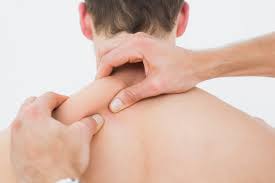
Introduction: De Quervain syndrome, also known as gamer’s thumb or mommy thumb, is a painful condition affecting the tendons on the thumb side of the wrist. It commonly occurs due to repetitive hand and wrist movements, leading to inflammation and irritation. While de quervain syndrome massage medical interventions like splinting or steroid injections are often recommended, massage therapy can be a natural and effective way to alleviate symptoms and promote healing.
H2: Understanding de quervain syndrome massage
De Quervain syndrome primarily affects the tendons of the thumb, specifically the extensor pollicis brevis and the abductor pollicis longus. These tendons run along the thumb side of the wrist through de quervain syndrome massage a narrow tunnel called the tendon sheath. When overused or subjected to repetitive stress, the tendons become inflamed, causing pain, swelling, and difficulty moving the thumb and wrist.
H3: The Power of Massage Therapy
Massage therapy offers a non-invasive approach to managing de Quervain syndrome by targeting the affected muscles, tendons, and surrounding tissues. Here are some massage techniques that can provide relief:
1. Effleurage: This gentle stroking technique helps improve blood de quervain syndrome massage circulation and reduce inflammation in the affected area. Using long, sweeping strokes, massage the thumb, wrist, and forearm in the direction of the heart.
2. Friction: Friction massage involves applying deep pressure and circular movements to break down scar tissue and adhesions around the inflamed tendons. Focus on the tender spots along the thumb side of the wrist, but avoid causing excessive pain.
3. Trigger Point Therapy: Identify and massage trigger points in the muscles of the thumb and forearm that refer pain to the affected area. Apply sustained pressure to these points until you feel a release of tension.
FAQs:
Q: Can massage therapy cure de Quervain syndrome? A: While massage therapy can provide relief from symptoms, it may not cure the condition entirely. It is often used as part of a comprehensive de quervain syndrome massage treatment plan that may include rest, splinting, and physical therapy.
Q: How often should I get a massage for de Quervain syndrome? A: The frequency of massage sessions depends on the severity of your symptoms and your individual response to treatment. It is best to consult with a qualified massage therapist who can tailor a treatment plan to your needs.
Q: Are there any risks associated with massage therapy for de Quervain syndrome? A: When performed by a trained professional, massage therapy is generally safe for individuals with de Quervain syndrome. However, excessive pressure or inappropriate techniques could exacerbate symptoms or cause further injury.
Conclusion: De Quervain syndrome can significantly impact daily activities and quality of life, but massage therapy offers a natural and effective way to manage symptoms and promote healing. By de quervain syndrome massage targeting the affected muscles and tendons, massage can alleviate pain, reduce inflammation, and improve mobility in the thumb and wrist. If you’re struggling with de Quervain syndrome, consider incorporating massage therapy into your treatment plan for relief and restoration.